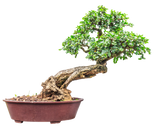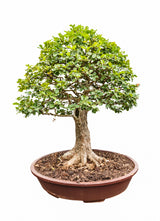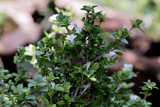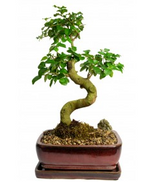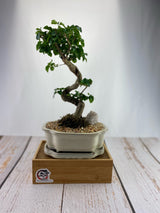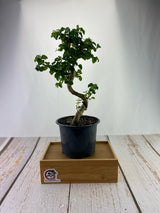Privet
The Chinese Privet, Ligustrum Sinensis, is a small tree grown in almost any soil, and Privets are very hardy and take well to root pruning and all Bonsai shaping techniques. The Chinese Privet leaves turn red in the fall and produce small scented white flowers appearing at the ends of new shoots in the summer. Followed by small black fruit, which is not edible. Seeing how well the Privet takes to pruning and wiring, it is a great indoor choice for beginners and experts alike.
BONSAI CARE
The Chinese Privet likes direct full sun and must be kept in moist soil during the summer months when placed outside. Indoors, the soil must not be allowed to dry out and requires
Watering:
- The Privet enjoys a lot of water during the summer months, and the root ball must not be left to dry out.
- During the winter months or when kept indoors year-round, the soil must be checked regularly, ensuring that the root ball does not dry out.
- It is good practice to check on the soil often until you are familiar with its watering needs.
- Training: Chinese Privets do well in all forms of Bonsai training, including wiring, pruning and shaping. The tree can also be defoliated entirely during the winter, allowing for new growth to emerge. This is also a good practice if there is insufficient light during the winter months.
- Repotting: repot once every 2-3 years and older ones once every 3-5 years. Make sure to not repot on years where hard pruning has been done.
PRODUCT DETAILS
YOUNG: 6"-12" tall, comes in a 6" grower's pot.
MATURE: 8" - 16" tall, comes in an 8" handmade ceramic pot.







